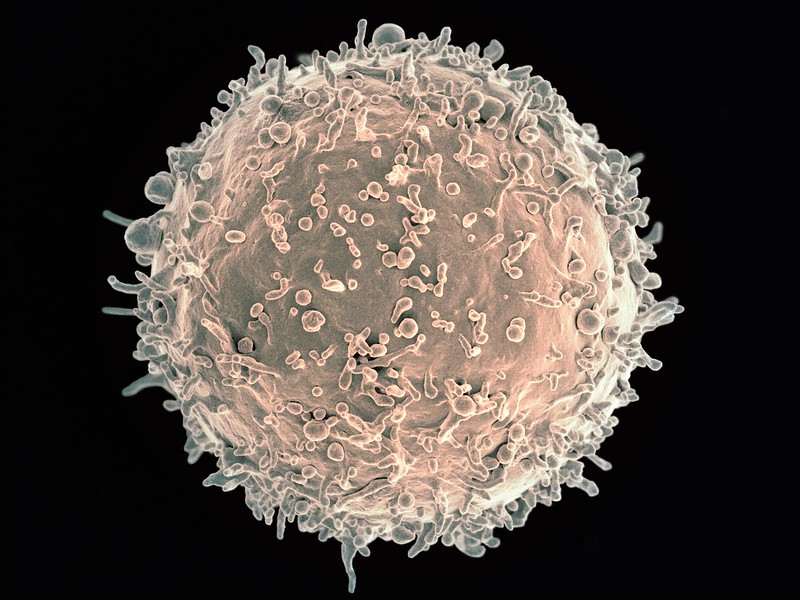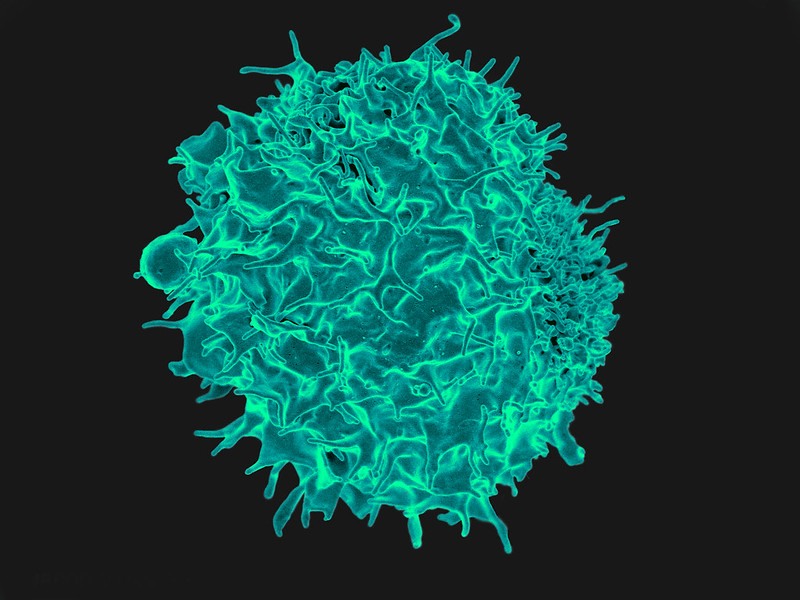Chicken and Egg: Which Comes First, Epstein–Barr Virus or Crohn’s Disease?

Crohn’s disease, a debilitating inflammatory bowel disease, has many known contributing factors, including bacterial changes in the microbiome that foster an inflammatory environment. Now, for the first time, Crohn’s disease has been tied to a virus – specifically, Epstein-Barr virus (EBV), best known for causing infectious mononucleosis (mono).
Researchers had already observed increased levels of EBV in the intestine of patients with Crohn’s disease and had also found associations between EBV and autoimmune diseases other than Crohn’s, including lupus, multiple sclerosis, and rheumatoid arthritis.
But which came first? EBV or Crohn’s disease?
‘It was a classic chicken and egg problem,” says Anubhab Nandy, PhD, a research fellow in the Division of Gastroenterology, Hepatology, and Nutrition at Boston Children’s Hospital.
A longitudinal study just published in Gastroenterology systematically looked at the role of viruses in Crohn’s and found strong evidence that EBV infection predisposes people to develop Crohn’s.
Tracking EBV and Crohn’s
Nandy and colleagues analyzed data from a cohort of initially healthy military recruits, aged 20 to 24, who provided periodic serum samples throughout their service. They tested the samples with VirScan, a high-throughput assay developed by study coauthor Stephen Elledge, PhD, at Harvard Medical School. VirScan enables detection of antibodies against a wide range of viruses, providing insights into viral exposures.
Compared with healthy controls, military personnel whose samples were positive for anti-EBV antibodies were three times more likely to eventually develop Crohn’s disease. Interestingly, evidence of EBV exposure preceded their Crohn’s diagnosis by five to seven years.
“We went into this study not looking for EBV; we were looking for any virus that might elicit inflammatory bowel disease,” says Scott Snapper, MD, PhD, the study’s senior investigator and director of the Inflammatory Bowel Disease Center at Boston Children’s. “Then, when EBV was a hit, we looked very specifically at immune responses to EBV with more detailed tests.”
These tests bore out and strengthened the VirScan findings.
The team next looked for anti-EBV antibodies in a second cohort – more than 5000 children (median age; 11 years) who were first-degree relatives of people with Crohn’s disease. In this cohort, EBV was not a statistically significant predictor of a subsequent Crohn’s disease diagnosis. Snapper speculates that having first-degree relatives with Crohn’s could already have put them at increased risk due to shared genetic or environmental factors, muddying the association with EBV.
EBV and the immune system
Another possibility is that EBV affects children’s immune systems differently, perhaps because children are less likely to develop infectious mono when exposed. “Responding to certain organisms early in life may boost the immune system in a way that prevents immune-mediated disease,” Snapper says.
Nandy and Snapper now want to figure out what EBV does to people at a molecular level to make them more susceptible to Crohn’s disease.
One possibility is that the virus has certain genes or molecules that interact with human genes involved in susceptibility to autoimmune conditions. Another may relate to an anti-inflammatory protein produced by EBV, remarkably similar to mammalian IL-10. People exposed to that protein may make antibodies against it, preventing their own IL-10 from working and leaving them susceptible to inflammatory disease.
“Mechanistically, we need to understand exactly how EBV alters the immune system leading to Crohn’s disease,” Snapper says. “If you could figure out the mechanisms, you could come up with new therapies.”
Source: Boston Children’s Hospital








